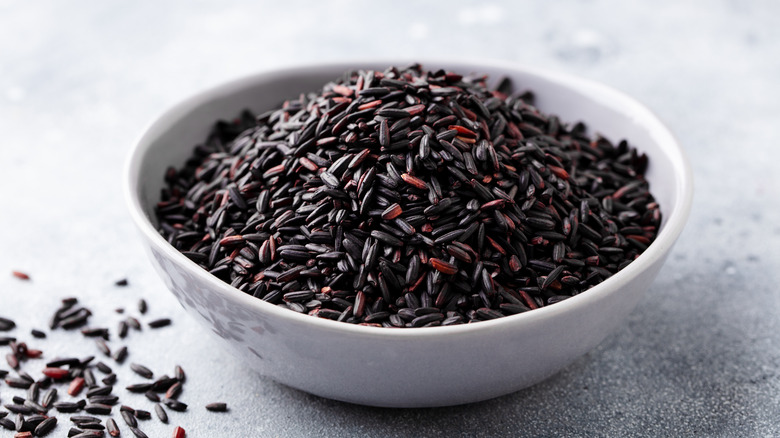Demystifying Wild Rice: Understanding If Wild Rice is Actually Rice!
Hello dear parents! It’s time to make you culinary experts and unravel one of the most intriguing questions that have perhaps crossed your minds in the kitchen: “Is wild rice actually rice?” We’ll journey into the world of grains to provide a wholesome answer to your curiosity and offer a better understanding of what you’re actually plating up for your kids!
Introduction to the Mystique of Wild rice
It’s quite common to see wild rice simmering on our stoves or popping up on the grocery list. It has appeared on our plates, in tantalizingly yummy dishes, and has even taken center-stage in various children-friendly recipes. But, the nagging question remains: Is wild rice, rice? Let’s find out!
What Is Wild Rice?
First off, let’s shed some light on what wild rice is. Contrary to its name, wild rice isn’t wildly related to the traditional rice we usually encounter. That’s right! Surprise, surprise! Wild rice, also known as Zizania, is a group of four species of grasses that produce edible seeds that somewhat resemble the grains of the conventional rice, Oryza sativa. These species grow in shallow water in small lakes and slow-flowing streams. Often cherished for its nutritious profile and unique, nutty flavor, wild rice has become a staple in many homes.
Understanding the Differences
So if wild rice is a grass, why the confusing name? It’s because the edible seeds it yields bear close resemblance to the standard rice grains. These grains, however, are generally longer, thinner, and sport a black, brown, or green hue. Additionally, the taste and texture of wild rice differ from that of common rice varieties. The former has a characteristically chewy exterior and a delightful nutty flavor, which might be an exciting addition for your children’s tastes!
Wild Rice vs. White Rice: The Nutritional Face-off
Parents, it’s time to put on your nutrition-detective hats! Let’s delve into the health and nutrition comparison of wild rice and white rice. Not only does wild rice bring a distinct flavor to the table, but it also brings a host of nutritional benefits. Compared to white rice, wild rice has fewer calories and carbohydrates, along with more protein and fiber—making it an excellent choice for the health of your little ones.
Wrapping Up: The Verdict on Wild Rice
To wrap up this culinary mystery: yes, despite its misleading name, wild rice is not technically rice. It is a totally different species of grain. However, it closely resembles rice in appearance and is prepared in similar ways. Besides, its fantastic nutritional profile makes it an excellent food choice for your family.
With this newfound knowledge, you can now impress your children and friends alike with your food wisdom. More importantly, you can make more informed food choices for your family’s diet. Happy cooking!
Remember to look out for the next sections of our guide that will dive deeper into the best ways to cook wild rice and tips on incorporating this nutritious grain into your children’s meals. Keep exploring the fantastic world of food and creating culinary magic in your kitchen!

All about Wild Rice: Is it Really Rice?
Warm greetings to all parents! Get ready to learn, as we dive deep into the mesmerizing world of grains and answer one of the most-asked questions, “Is wild rice actually rice?” This quest will not only feed your curiosity but also bring valuable knowledge to your tables and meal times!
An Overview of Wild Rice
Wild rice probably gets a spot in your shopping lists and even finds a place in your regular meals. Its presence in our pantries and plates certainly make us wonder: Is wild rice, rice? Let’s dive into the mystery!
So, What is Wild Rice?
Before anything else, it’s essential to understand what exactly wild rice is. Break away from the misconceptions because wild rice might not be what you think it is. Despite its name, wild rice or Zizania isn’t a close relative of the regular rice we’re familiar with. It belongs to the grass family, with four different species producing edible seeds that have an uncanny resemblance to traditional rice grains. Found growing in shallow water bodies and slow streams, wild rice has earned a spot in our hearts (and meals) with its unique flavor and nutrition-packed profile.
Decoding the Differences
You might ask, why is it called wild rice if it’s actually a grass species? Well, it’s because of the grain-like seeds that this grass produces, which have a strong resemblance to traditional rice grains. These grains are usually longer, slimmer, and showcase a color palette ranging from black and brown to green. Your little fussy eaters might find the distinctive nutty flavor and chewy texture of wild rice an interesting variation from their usual meals.
Wild Rice vs. White Rice: The Nutritional Warfare
It’s time to turn up the passion for nutrition and jump into a little comparison between these two ‘rice’ varieties. The underdog, wild rice, not only brings its own unique tastes but even overshadows white rice with its nutritional value. It serves fewer calories and carbs while gifting you with more proteins and fibers, which makes it a worthy contender to secure a favorable position for your kids’ health.
The Final Word: Understanding the True Nature of Wild Rice
Summing up this grainy mystery: Wild rice, contrary to its name, is not technically rice, but a different species of grain. However, it bears similarity with conventional rice in looks and cooking methods. Furthermore, the exciting flavor and powerhouse of nutrients it brings can significantly upgrade your family’s diet.
With this enlightening journey, you can showcase your knowledge in front of your friends and children and make wiser decisions about your family’s dietary needs. Keep cooking joyfully!
Keep an eye out for our upcoming sections, exploring the best ways to cook wild rice and how to subtly infuse this nutritious grain into more of your kids’ meals. Stay curious and continue discovering the fascinating world of gastronomy while spreading love from your kitchen!
Preparing for the Wild Rice Journey: 5 Things Every Parent Should Know
1. Understanding the Basics: Is Wild Rice Actually Rice?
To start with, it is important for parents to know that wild rice isn’t technically rice. Instead, it’s a seed from an aquatic grass, named Zizania. While it may be cooked and eaten like rice, biologically it belongs to a different family.
2. Knowing Nutrition Facts
Wild rice is a nutritional powerhouse. It is packed with protein, fiber, B vitamins, minerals and antioxidants. Additionally, it is also gluten free. This nutritious profile makes it a healthier choice for kids.
3. Cooking Methods
To prepare wild rice, you typically rinse the rice under cold water, then boil it in a pot – similar to regular rice. However, wild rice often requires longer cooking times than regular rice due to its tough exterior.
4. Storing Wild Rice
Wild rice should ideally be stored in an airtight container in a cool, dry place. It has a significant shelf life and can last up to a year if stored properly.
5. Include Wild Rice in Diet
You can seamlessly include wild rice in your child’s diet by adding it to soup, salad or make it a side dish. Children especially love wild rice because of its unique flavor and chewy texture.
Understanding the differences between wild rice and regular rice can guide parents in providing nutritious meals for their children. So, embrace the wild rice adventure and enhance your family’s diet with this wholesome food.
For more great articles please see here. For more information see here
Disclaimer
The articles available via our website provide general information only and we strongly urge readers to exercise caution and conduct their own thorough research and fact-checking. The information presented should not be taken as absolute truth, and, to the maximum extent permitted by law, we will not be held liable for any inaccuracies or errors in the content. It is essential for individuals to independently verify and validate the information before making any decisions or taking any actions based on the articles.




